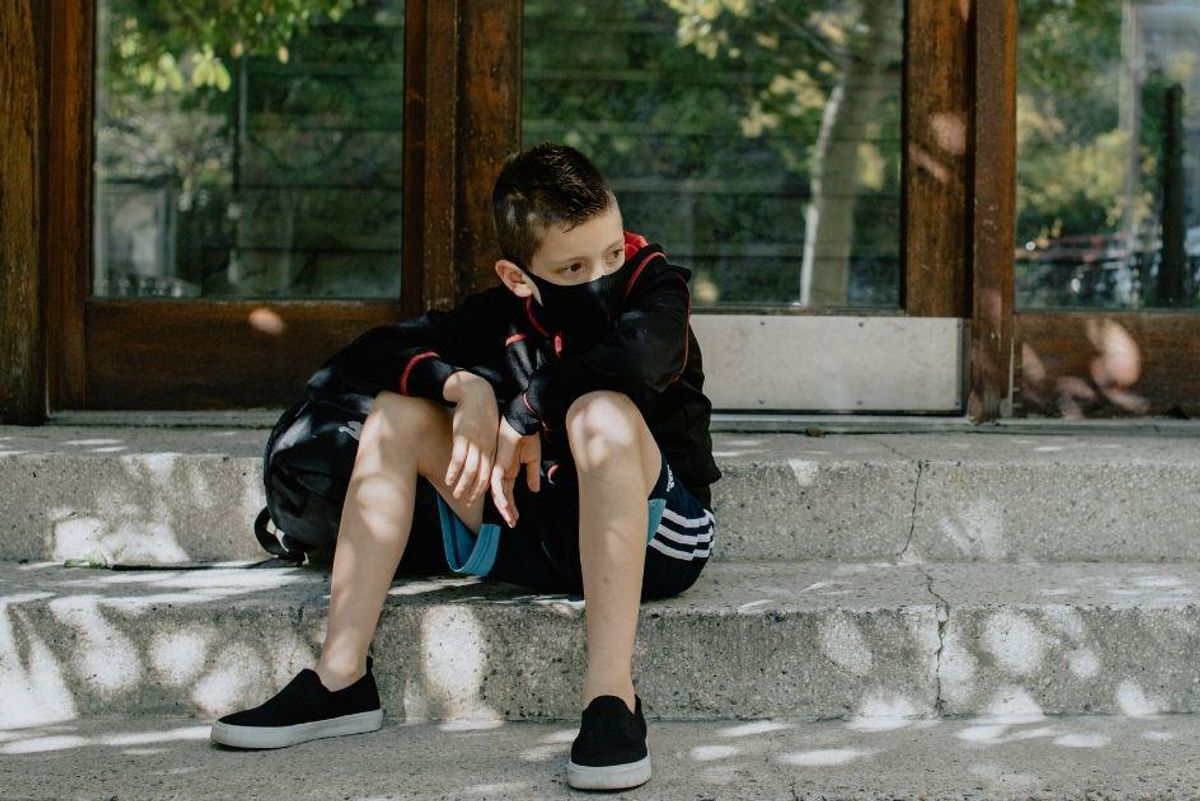
Public education is one of the most complex issues under normal circumstances, but the pandemic has made it far more complicated. The question of how to meet the needs of kids who come from diverse families, communities, and socioeconomic circumstances—not to mention having diverse mental strengths, interests, and challenges of their own—is never simple, and adding the difficulty of living through a pandemic with its lack of certainty, structure, and security is a whole freaking lot.
Kids' individual experiences during the pandemic have varied greatly. While the overall situation has been hard for everyone, some kids have actually thrived at home, away from the rigid schedules and social quagmire of traditional school. Other kids have floundered without the routine and personal interaction, while still others are stuck in terrible home situations or have needs that can't be met by parents alone. Some kids are being greatly harmed by missing school.
Educators, politicians, public health officials, and parents have gone around and around for the past year trying to figure out what smart, what's safe, what's necessary, and what's not for kids during COVID-19. Many of us are worried about the mental health and educational struggles children are facing. There are no easy answers. There is no one-size-fits-all solution.
However, there is an attitude that we can take that will serve all our children as more kids move back to the classroom. A 40-year veteran of our education system, former New York teacher and administrator Therea Thayer Snyder, wrote a letter on Facebook that has resonated with teachers and parents alike. In it, she describes what our kids have experienced during the pandemic, how academic standards and measures no longer apply, and what schools can do to help kids process what they've been through. It reads:
"Dear Friends and Colleagues:
I am writing today about the children of this pandemic. After a lifetime of working among the young, I feel compelled to address the concerns that are being expressed by so many of my peers about the deficits the children will demonstrate when they finally return to school. My goodness, what a disconcerting thing to be concerned about in the face of a pandemic which is affecting millions of people around the country and the world. It speaks to one of my biggest fears for the children when they return. In our determination to "catch them up," I fear that we will lose who they are and what they have learned during this unprecedented era.
What on earth are we trying to catch them up on? The models no longer apply, the benchmarks are no longer valid, the trend analyses have been interrupted. We must not forget that those arbitrary measures were established by people, not ordained by God. We can make those invalid measures as obsolete as a crank up telephone! They simply do not apply.
When the children return to school, they will have returned with a new history that we will need to help them identify and make sense of. When the children return to school, we will need to listen to them. Let their stories be told. They have endured a year that has no parallel in modern times. There is no assessment that applies to who they are or what they have learned. Remember, their brains did not go into hibernation during this year. Their brains may not have been focused on traditional school material, but they did not stop either. Their brains may have been focused on where their next meal is coming from, or how to care for a younger sibling, or how to deal with missing grandma, or how it feels to have to surrender a beloved pet, or how to deal with death. Our job is to welcome them back and help them write that history.
I sincerely plead with my colleagues, to surrender the artificial constructs that measure achievement and greet the children where they are, not where we think they "should be." Greet them with art supplies and writing materials, and music and dance and so many other avenues to help them express what has happened to them in their lives during this horrific year. Greet them with stories and books that will help them make sense of an upside-down world. They missed you. They did not miss the test prep. They did not miss the worksheets. They did not miss the reading groups. They did not miss the homework. They missed you.
Resist the pressure from whatever 'powers that be' who are in a hurry to "fix" kids and make up for the "lost" time. The time was not lost, it was invested in surviving an historic period of time in their lives—in our lives. The children do not need to be fixed. They are not broken. They need to be heard. They need to be given as many tools as we can provide to nurture resilience and help them adjust to a post-pandemic world.
Being a teacher is an essential connection between what is and what can be. Please, let what can be demonstrate that our children have so much to share about the world they live in and in helping them make sense of what, for all of us has been unimaginable. This will help them-- and us--achieve a lot more than can be measured by any assessment tool ever devised.
Peace to all who work with the children!"
It's always been true—but especially vital to remember now—that kids are human beings first. They are not receptacles we're shoveling knowledge into, they're not machines designed to churn out perfect test scores, and they're not robots who can be expected to return to an assembly line of learning after this past year. Millions of our kids will have lost a loved one to COVID-19 while millions of others are being told it's all fake numbers. Millions of kids will are coming back to school from homes where parents have lost jobs, where food has been scarce, where insecurity has taken hold. Millions of kids are dealing with anxiety and depression, some of which they already had pre-pandemic and some of which has come on in the past year.
As parents and teachers, our job is not to make sure kids "catch up" to arbitrary standards that barely made sense before the upheaval of the past year. Our job is to nurture these growing, changing human beings as best we can, to help them build the resilience to move forward and learn from what the whole world has experienced. Learning happens in a million ways, and many of the lessons of this past year are just as valuable as any lesson they'd learn in a classroom.
Kids need us to understand that and to honor them right where they are.
- Elementary teacher explains why we can't keep using schools as ... ›
- Teachers are doing one of society's most valuable jobs, but we sure ... ›
- 11 times teachers totally blew us away with love for their students ... ›
- Let's give ourselves a hefty amount of grace for how we used our pandemic 'free' time - Upworthy ›




 Woman in denim jacket covers face with sleeve, standing outdoors with blurred background.
Woman in denim jacket covers face with sleeve, standing outdoors with blurred background. Woman with outstretched arms in a sunlit field, enjoying the outdoors.
Woman with outstretched arms in a sunlit field, enjoying the outdoors. Lush forest with vibrant green and orange foliage in soft, misty sunlight.
Lush forest with vibrant green and orange foliage in soft, misty sunlight. Friends laughing and drinking coffee at a cozy cafe table.
Friends laughing and drinking coffee at a cozy cafe table. Woman with curly hair in sunlight, eyes closed, wearing a purple top.
Woman with curly hair in sunlight, eyes closed, wearing a purple top. Man smiling with hand over face, standing outdoors against a blue sky background.
Man smiling with hand over face, standing outdoors against a blue sky background. Hand painting a still life on canvas with blue and orange tones.
Hand painting a still life on canvas with blue and orange tones. Woman sitting on a chair in the water, writing in a notebook at sunset.
Woman sitting on a chair in the water, writing in a notebook at sunset.


 Happy Girl GIF by RetMod
Happy Girl GIF by RetMod  Woman enjoying some self care time.
Woman enjoying some self care time.
 Women walking down a street.Image via Canva Photos.
Women walking down a street.Image via Canva Photos.  Woman aware of her surroundings in a parking garage. Image via Canva Photos.
Woman aware of her surroundings in a parking garage. Image via Canva Photos.
 "You're hilariously brilliant at everything you hate."
"You're hilariously brilliant at everything you hate."  "Bridget is authentically herself…and triumphs in her own way."
"Bridget is authentically herself…and triumphs in her own way."  "They're written in some curious language that I can't really understand."
"They're written in some curious language that I can't really understand."